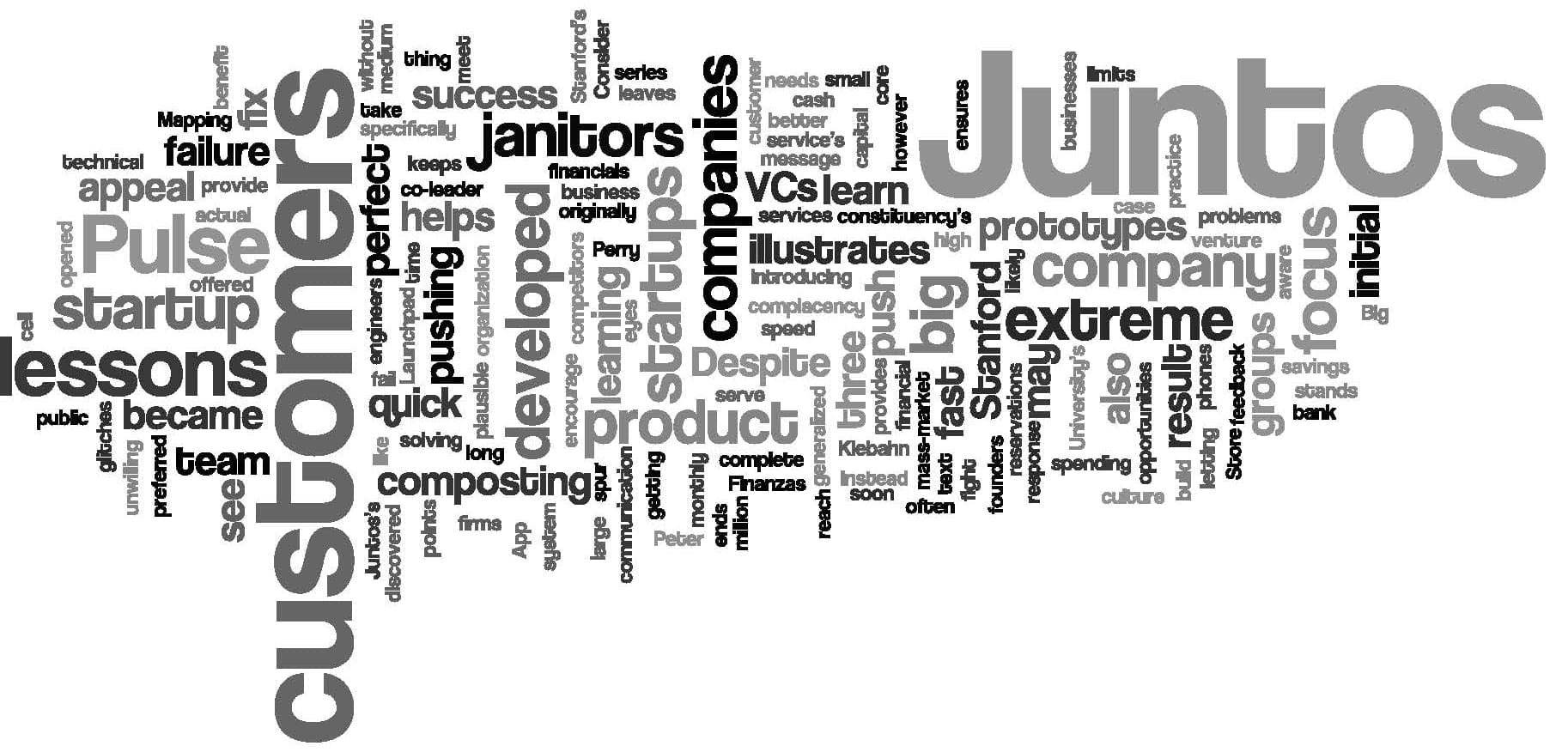In the first post of this two-part series, Peter posited three lessons—focus, composting, and high clock speed—that big companies can learn from startups. Here, he illustrates these lessons with stories from actual startups.
Consider Juntos Finanzas, a startup that provides financial services to a potential market of 60 million “unbankable” workers; the organization currently focuses specifically on Stanford University’s night janitors. At the beginning, venture capital firms did not see value in a company that targeted these customers. In response, Juntos developed a solution that opened up opportunities for, in the VCs’ eyes, more bankable groups of customers. As a result, as of February 2012, Juntos was raising money.
Despite VCs’ reservations, Juntos stands to benefit from focusing on “extreme customers.” Because Juntos’ competitors are not solving this constituency’s problems, it is plausible, even likely, that Juntos’ focus will result in innovations that may be generalized to other groups.
By contrast, large companies take a long time to “perfect” their products before letting customers see them. In practice, this often means that the big company ends up introducing a version that looks perfect to its engineers but leaves customers unwilling to buy.
Instead, big companies should focus on “extreme customers,” and can do so without giving up on their core business. By acting like a startup, from building quick product prototypes to getting customer feedback and iterating, they may develop solutions that appeal not only to those extreme customers, but that also have mass-market appeal.
This was the case with Juntos. The company originally wanted to build a bank to serve Stanford janitors, complete with an online banking system. Juntos soon discovered, however, that most in its target audience did not own computers, though they did own cell phones. Text messaging was their preferred communication medium. To provide the demographic with a product to meet their needs, Juntos offered the janitors a way to text message the details of each monthly cash disbursement. As they became better aware of their spending habits, they were able to adjust their financials to reach their savings goals. And Juntos had developed a beneficial, accessible product.
Mapping out Juntos’s initial failure—and “composting” the lessons—fuelled eventual success.
Pulse, a startup that developed a news-reading app that became very popular on Apple’s App Store, also illustrates our three lessons. Despite its initial success, Pulse wants to preserve its culture of producing fast prototypes, so it keeps pushing its developers to their limits.
As Perry Klebahn, the co-leader of Stanford’s Launchpad class, points out, Pulse founders push their team to fix technical glitches from the service’s public “bug” list, which almost ensures that the team will “fail (fast) in the process of pushing a small fix out.” That push helps Pulse fight complacency, spur quick failures and encourage learning that helps it improve.
Editor’s Note: In his 11th book, “Hungry Startup Strategy: Creating New Ventures with Limited Resources and Unlimited Vision,” forthcoming November 2012 from Berrett-Koehler Publishers, Peter will delve into the topic in greater detail.

























